Mortar has been used to build walls and structures for centuries, with the earliest known use dating back to 6,500 B.C. in Pakistan. While mortared natural stone garden walls are a practical choice for retaining soil, creating barriers and providing seating, they are also aesthetically pleasing in their ability to add an instant timeless quality and structure to a garden. Mortared stone walls in particular have a finished look that lets them blend into almost any landscape.
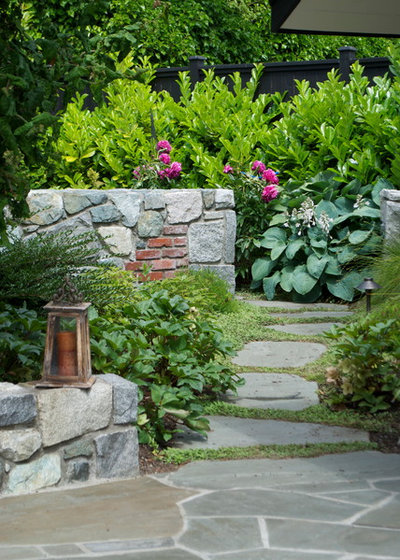
Greenspace Designs
The basics: There are two basic kinds of natural stone garden wall: dry stacked and wet laid, or mortared. Wet-laid walls use mortar, a workable paste used to bind the stone together, whereas dry-stacked walls have interlocking stones fitted together.
There’s debate over the longevity of mortared stone walls versus dry stacked. Essentially, it comes down to the importance of a sturdy foundation, proper drainage, and the skill level and knowledge of building techniques and materials on the part of the stone mason. Dry-stacked and mortared walls can be equally durable and last for decades if built correctly.
Tip: It’s necessary to obtain a permit and seek the expertise of a landscape architect or an engineer for a dry-stacked or wet-laid wall taller than 3 feet.
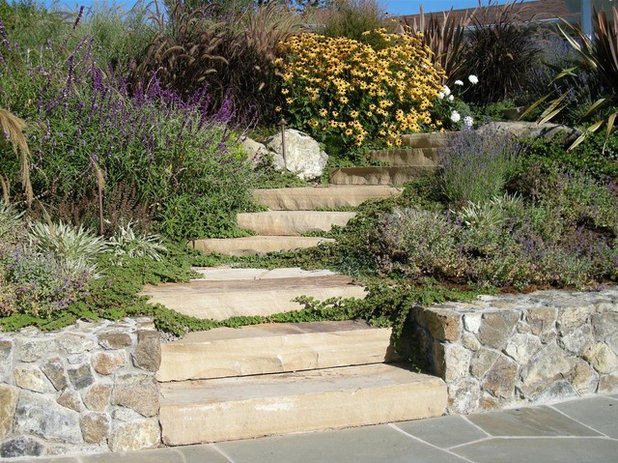
O'Connell Landscape
Cost: The cost to build a mortared stone wall can vary greatly, from $65 to $100 per face foot for materials and labor. The different stone types are the biggest reason for this wide price range.
Shown: A mortared stone wall made from native serpentine that was left over from excavation on the site.
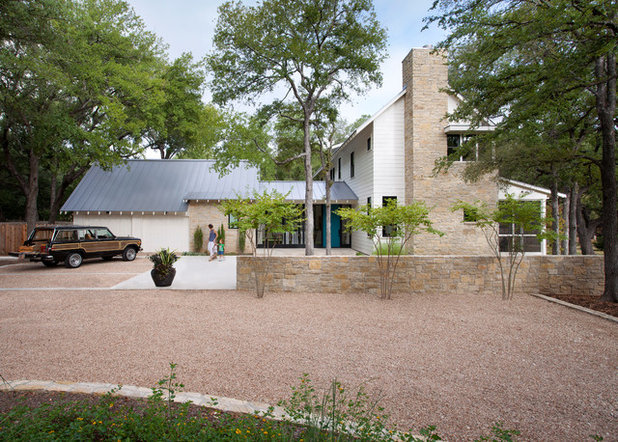
Tim Cuppett Architects
Pros:- Aesthetics: A mortared wall may be the way to go for those who prefer a clean, polished look. It has a slightly less rustic look than a dry-stacked wall.
- Time to assemble: Building a mortared stone wall is still an exercise in patience and trial and error, but it does take slightly less time to fit the stones together than for a dry-stack stone wall, which requires more precision.
- Longevity: If built correctly, a mortared stone wall will retain its beauty and last decades.
Shown: A mortared stone wall made from Lueders limestone
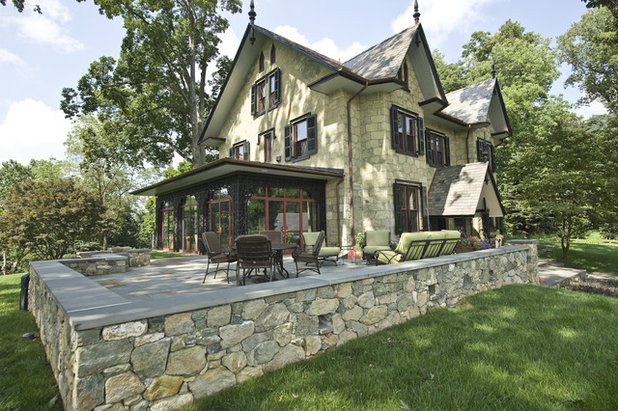
Pine Street Carpenters & The Kitchen Studio
Cons:- Drainage: It’s necessary to ensure that some form of drainage moves water away from the wall, to reduce the chance of cracking along the mortared joints. The inclusion of weep holes, where water can pass through the wall, and a perforated pipe at the base that carries water away from the wall and down a slope are the two most common drainage solutions.
- Expense: The addition of a stone wall, or series of walls, to a garden is generally considered a good investment and can help increase a home’s resale value, but the initial construction is not cheap.
- Skill level needed to build: Building a mortared stone wall is not considered a DIY project and is best left to expert stone masons, who have experience in the proper construction techniques and knowledge of the materials.
- Maintenance: Occasional repairs, including repairing cracks and resetting loose stones, are sometimes needed.
Shown: A mortared stone wall made from local serpentine stone quarried in southeastern Pennsylvania
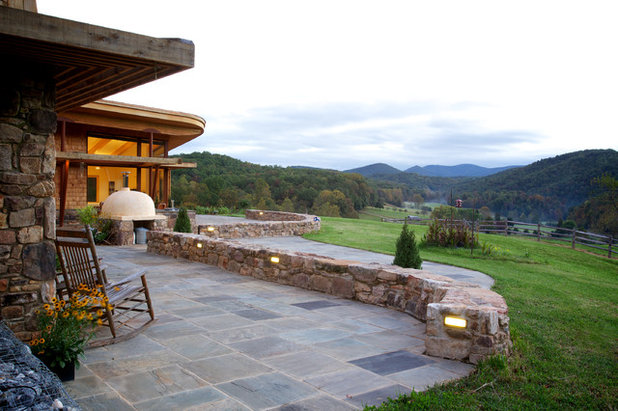
Kaplan Thompson Architects
Stone types: There are three basic types of stone: uncut, or stone as it’s found naturally; semidressed, which is roughly cut into rectangular shapes; and ashlar, which is stone that has been carefully cut into square and rectangular shapes. Ashlar is the most expensive stone type.
When choosing materials, select a stone that complements your home’s style and the surrounding landscape. As always, try to choose one that can be locally sourced to reduce the environmental costs involved with transporting it long distances.
Types of stone include slate, sandstone, basalt, quartzite and granite. It’s worth a trip to your local stone yard to see the variety of stone types and colors available, ranging from charcoal gray to mottled rust and honey gold.
Shown: A Catawba stone wall
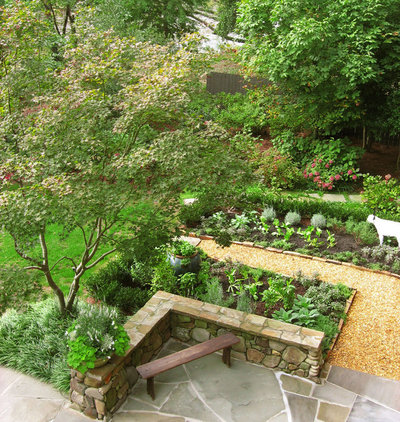 Tip:
Tip: Building a stone wall is backbreaking work. Be sure to have the stone delivered as close as possible to the site of the future wall to cut down on unnecessary lifting and moving.
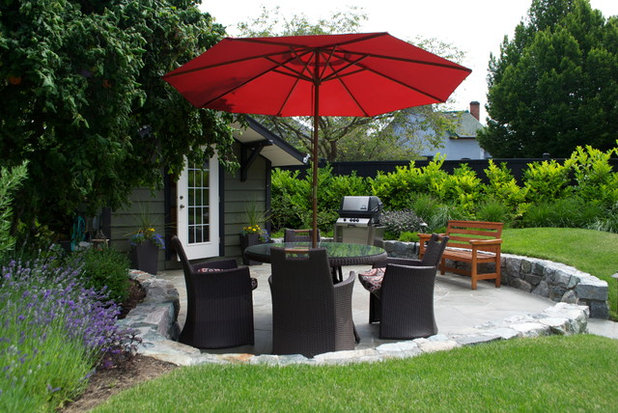
Greenspace Designs
Building the wall: A proper footing is the most important factor to ensure a mortared wall’s strength and longevity. Due to natural shifting of the earth’s surface and heaving caused by the freeze-thaw cycle, the wall must be able to withstand a certain level of movement, or it will crack along the mortared joints.
The soil type where you want to build and the wall’s finished height will determine how deep and wide the footing should be. In general, the footing must be deeper than the frost line and be set in subsoil or gravel — at least 12 to 18 inches deep. Another good rule of thumb is that for every foot of height, the base should be extended 1 inch beyond both the front and the back of the wall. For example, if the wall is 2 feet tall, the base should be extended 2 inches beyond the front and back of the wall.
As mentioned previously, accounting for proper drainage of water is the other key factor when constructing a mortared stone wall.
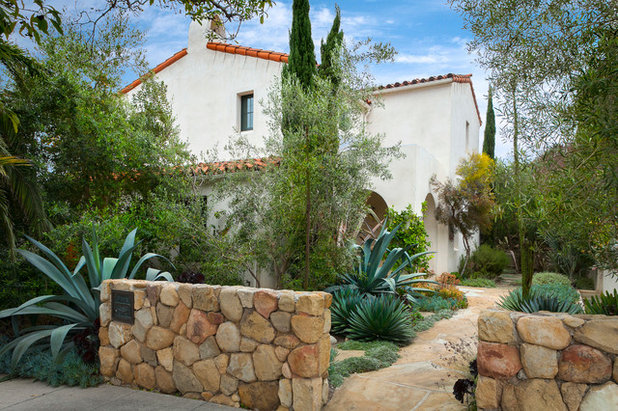
David M. Kim, Realtor @ Village Properties
How to Use Mortared Stone Walls
Freestanding wall. A short freestanding wall on either side of this entry path to a Santa Barbara, California, home lends a touch of formality.
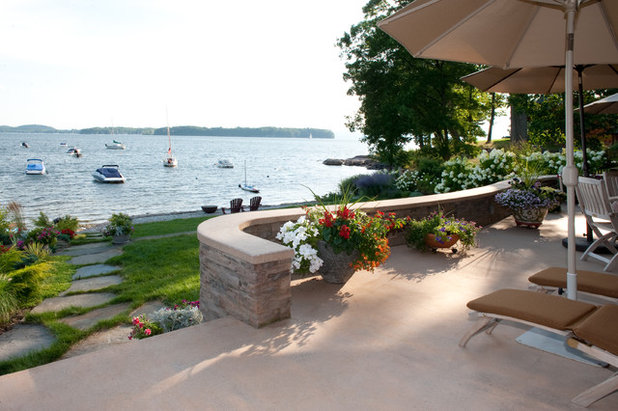
Mary Prince Photography
Retaining wall. Here, a retaining wall at the edge of the patio creates a barrier to the landscape beyond and doubles as seating.
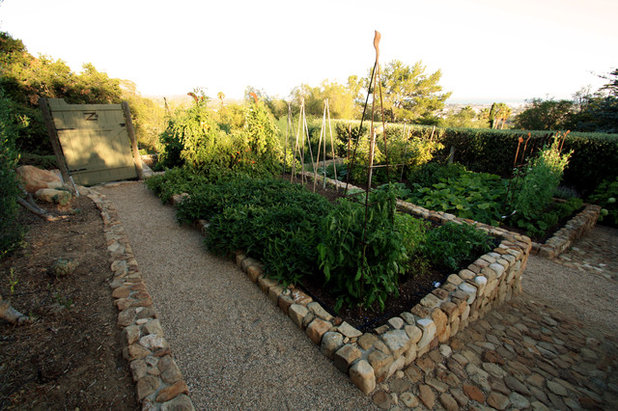
Paul Hendershot Design, Inc.
Raised planter. A mortared stone wall can be used to create a raised bed for ornamental plantings or edibles.





